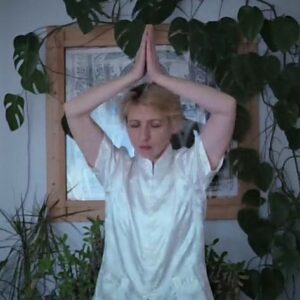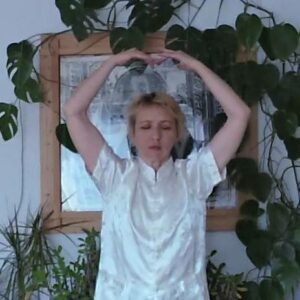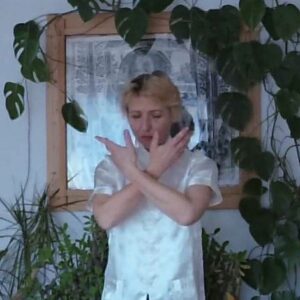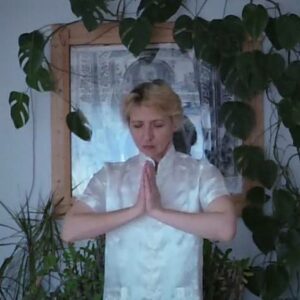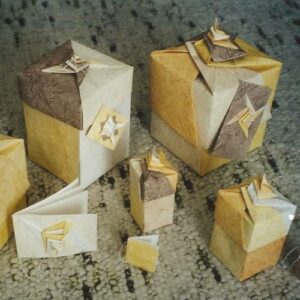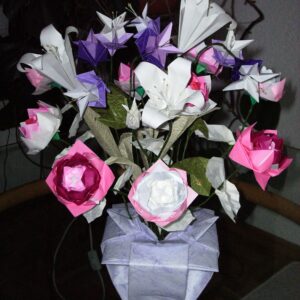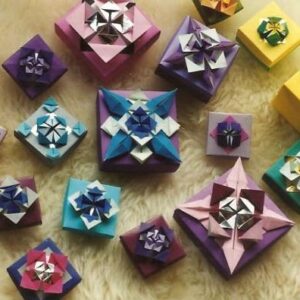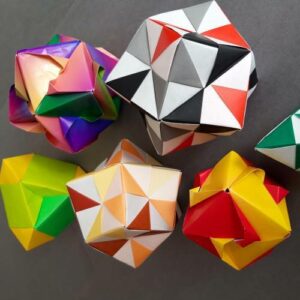Creative Design
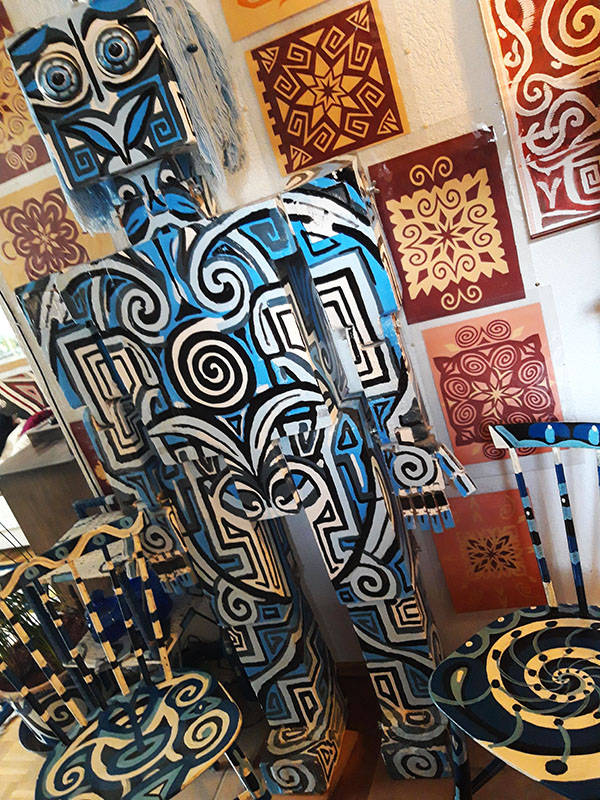
At age sixteen, following a dream vision , K.R. Florey built an over-life-sized „robot“ using styrofoam and plaster, which she then painted in 1997.
She enjoys painting ceramics, or using clay threads for ornamental design on ceramic plates, as well as making linocuts and printing them.
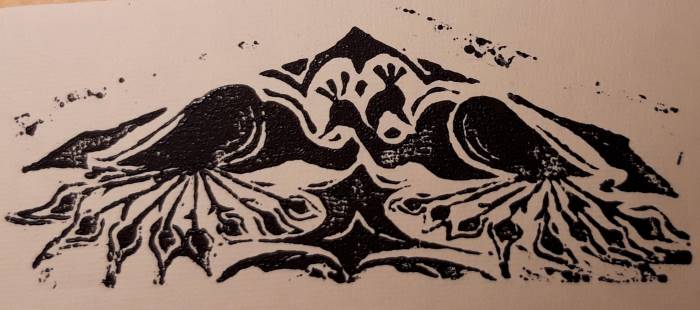
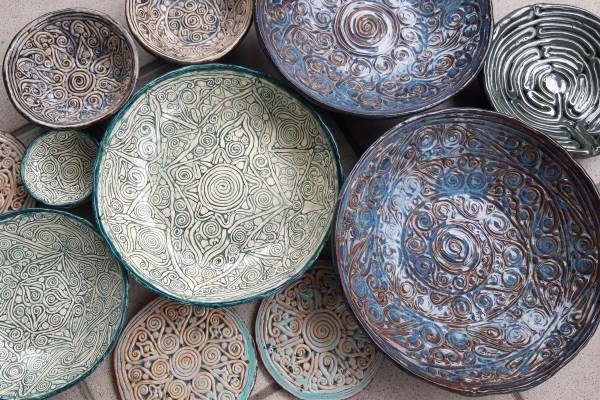
Origami
During her first concert tour to Japan with the Vienna Chamber Orchestra, K.R. Florey came across the book “Origami Boxes” by Tomoko Fuse. It rekindled her enthusiasm for the Art of Paper Folding and laid the foundation to her extensive collection of Origami books and beautiful papers. What she enjoys most, is folding modular geometric solids, boxes or flowers.
Quite often she combines or modifies the given instructions, according to her own imagination.
Writing
2007/8 K.R. Florey followed the suggestion of her former fellow student at N.I.U., Thai artist and childrens’ books publisher Sarawanee Jinayon, to write and illustrate her own fable „Milva and the Magic Voice“ (Pakvan Publishing, 2008). The story is about the self-empowering option of being able to observe one and the same fact from different perspectives.
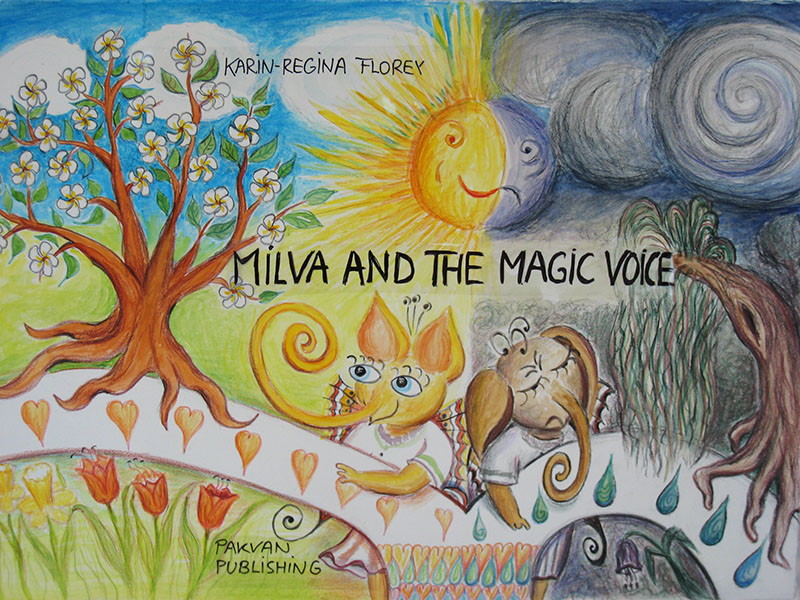
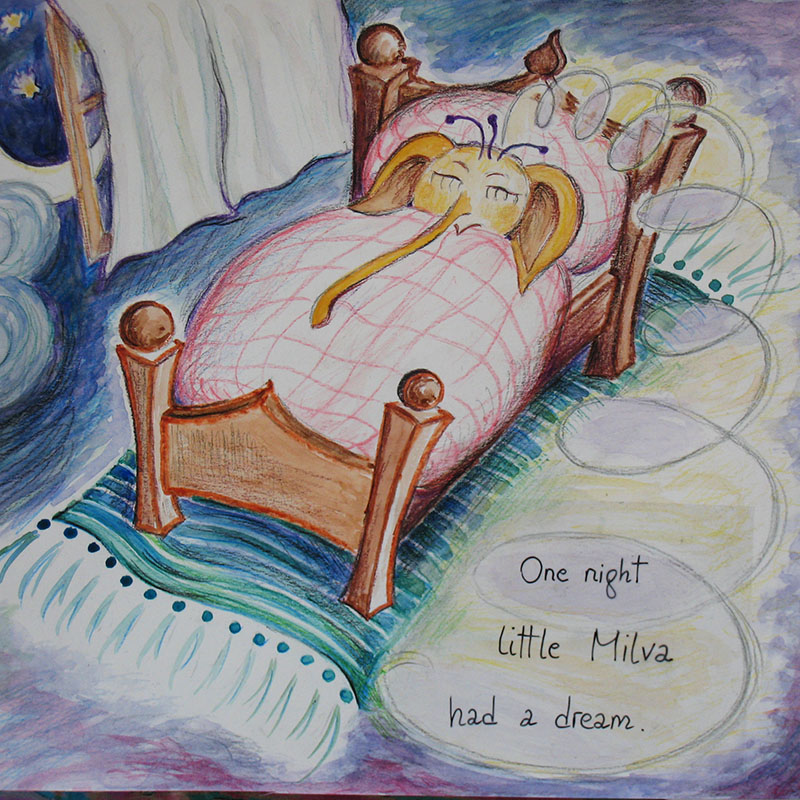
In 2010, she wrote and designed another childrens’ book, „Kokopelli makes Music“, featuring illustrations in wood branding technique, which was printed privately only. Therein, Kokopelli (who, according to American Indian Mythology, plays the flute) tries out various musical instruments and has a hard time deciding on which one to choose. No problem, as long as he makes music!
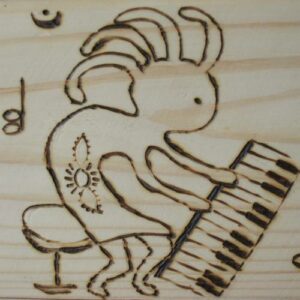
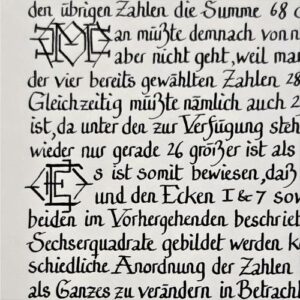
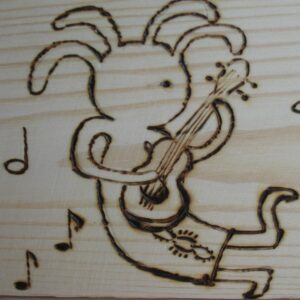
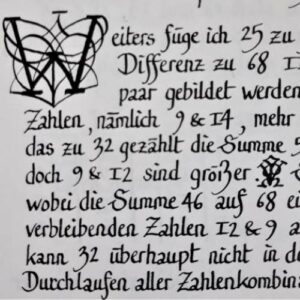
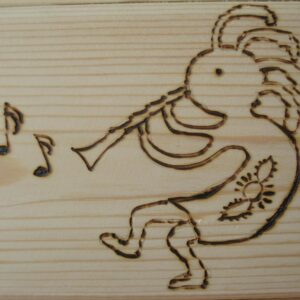
For her father, K.R. Florey began to translate the treatise on Magic Squares by M. Frenicle (1693) from French to German, and to write it in calligraphy. 43 pages in the size of A3 were finished.
Her special interest lies in the exploration of the conscious human mind while playing the violin. She constantly makes notes of her observations and thoughts. While studying at Indiana University, Bloomington, USA, she enrolled in seminars on creative non-fiction writing („Spiritual Autobiography“). During that time she wrote “The Tale of the Golden Mist or The Temptations of Onono”, a fairy tale for grown-ups about the relations beween sense perception and the conscious mind. In 2017/18, she attended the seminar „Fundamentals in creating a dissertation concept” at the University Mozarteum in Innsbruck (A).
Excerpts from a paper on Performance Psychology in English, instead of a translation from the German text:
» The Phenomenon of Paradox in Consciousness and its Impact on Performance
In musical performance, teachers have been traditionally looked down upon due to the instinctive belief that doing something well and being able to talk about it are mutually exclusive. Using language, concepts and descriptions seems to imply a form and degree of consciousness, which is feared to be detrimental to the ability to perform. [..] In order to prove that the two abilities are compatible, a few successful musicians exhaust themselves by teaching and performing incessantly, which, in the long run, yields the danger of harming their substance as persons, if not the quality of both activities. In my opinion it would be essential therefore, to find a valid definition and full understanding of the principles of such compatibility – if it exists – between performance ability and verbal consciousness.
[..] I would like to mention a recurring feature in my attempts (at formulating this definition). This feature is the paradox, and for it I find many supporting examples in the literature about Zen Buddhism, especially the “Koans”, which also involve action as well as language. [..] In my opinion, a Koan uses the medium of paradox to describe the practical experience of a continuum, which does not allow “either – or”, but always comprises both. [..] The magic of Zen Koans lies in shattering the mind’s attachments to concepts by using negation and paradox, without shattering the validity of the concepts themselves. [..] In my own observations of performance “fluidity” in the process of violin playing, I have encountered the paradox in many aspects. [..] I have found the greatest energy of movement in concentrating on the motionless. I have found that perception cannot be controlled, only the intervals which lead to and from it. In a chain of causal relationships, I have realized that the agent always changes. In order to identiy myself with an aspect of perception, I found it necessary to entirely attribute it to the object.
I have experienced that time will stretch and seemingly suspend its movement, once the brain refrains from repeating the information furnished by the senses, but moves on according to the shape of the intervals in between. I have realized that perception becomes conscious when it is recognized as an active accomplishment. I suspect that in the learning process action cannot be controlled and repeated, but reaction can. I have acknowledged as the greatest challenge that the true self is expressed only when self-reflection is silenced.. In all these attempts to capture the nature of good musical performance, the common trait is the sensation and perpetuation of a movement, which neither begins nor ends with the individual who deals with it.
Partaking in and sharing this continuous movement – which is life itself – could be a very general definition of a musical persormer’s goal, pardox in consciousness the means to ensure its attainment, and positive, uniting peace of mind the proof of the latter in both performer and audience. [..] «
K. R. Florey May 2, 2000/Jan. 2021
QiGong
» Look at the blue sky; the blue sky is looking at you. Blue sky is all around you, it is with you all the time, blue sky is inside you. You are the blue sky. «
Ooi Kean Hin
QiGong is a technique of mindful body motion, that is closely linked to the principles of traditional Chinesise Medicine. In the course of her studies at Indiana University in Bloomington, USA, (1999-2001) K.R. Florey encountered Chilel (Zhineng) Qigong for the first time. This form of qigong was originally conceived by Dr. Pang Ming, a chinese medical doctor and qigong master. She realized the similarities between qigong (which translates “energy-practice”) and practicing a musical instrument. Both challenge and effect the body-mind-soul-entity, hence she practices them in unison.
» Use your Yi (Mind) to lead your Qi (Energy), then your body will follow. «
Qigong training theory
K.R. Florey attended numerous workshops with Teachers Luke and Frank Chan in the US, Germany, Italy and the Netherlands. She translated Luke Chan’s book „101 Miracles of Natural Healing“ (Benefactor Press) from English into German, and obtained the licence to teach Level 1 after a one month training camp in China. After that she kept taking lessons in Zhineng QiGong with Teacher Ooi Kean Hin in Malaysia and online; as well as with Teachers Li Hong Shi, Liang Lao Shi and Dr. Wentzel in Austria and Germany. In 2021 she found her interest in reflecting and refining one’s consciousness confirmed in Mingjue Gungfu. Following a one-year online teachers’ training at the Zhineng QiGong Mingjue Academy with teacher Wei Qifeng (co-founder of the “World Consciousness Community”), K.R. Florey became a “Certified Mingjue Gongfu Teacher” in May 2022.
” [..] Our pure consciousness is our greatest treasure and our whole life becomes more peaceful and harmonious, full of universal love. Consciousness is the master key. [..] Ming (明) means “clear”, jue (觉) means awareness or observation. So Mingjue together means: consciousness knows itself clearly. [..] Mingjue can be described as awakening consciousness, pure consciousness or the pure observer.”
Wei Qifeng
